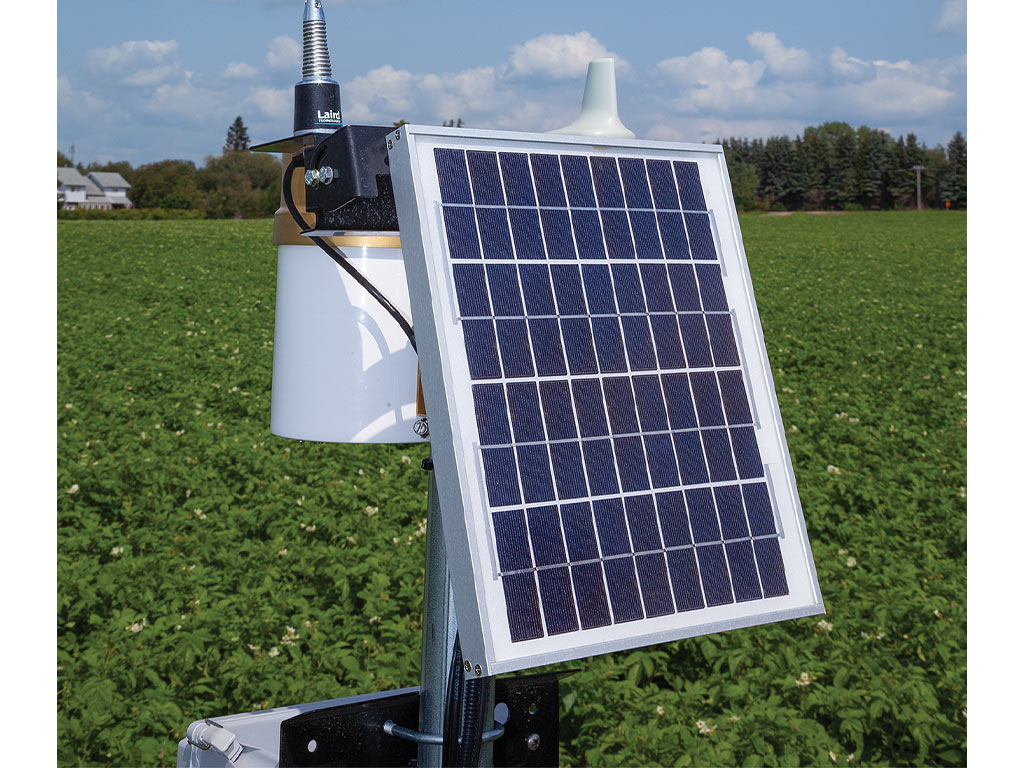Agriculture, Education September 01, 2024
Sunny Outlook?
Weather forecasting has come a long way.
by Lorne McClinton
Weather is critical to farmers' livelihoods; most follow weather forecasts with near-religious fervor. They'll wait with bated breath to see if the forecast, desperately needed one-inch of rain will materialize, and can be bitterly disappointed if it doesn't.
As recently as the early 1980s anything but the shortest-term weather forecasts were hit or miss at best. Meteorologists were the butt of almost as many jokes as lawyers. But forecasts aren't a joke anymore. Five-day forecasts will now likely be accurate 80% of the time and the current daily forecast will almost certainly be spot on. What's changed?
"When I first began in the business in 1979 all analysis was done on paper," says Drew Lerner, founder, president, and chief meteorologist with World Weather Inc. in Overland Park, Kansas. "Back in those days we used the basic weather knowledge that we had, and the 24-hour and 48-hour forecasts the US National Weather Service sent out by facsimile (faxes) to create forecasts. That was all that we had. There were no long-range outlooks outside of theories that I used regarding solar cycles and general trends that we knew of in the atmosphere. No computer systems could predict the weather out beyond 48 hours."
Above. Drew Lerner says better accuracy is due to the advent of high-powered computers, career-changing research into the interactions between the oceans and the atmosphere, and the massive increase in weather stations.
Ancient history. But that's all in the past now. The biggest reason is the development of powerful modern computers that crunch the weather data from ground level and at various heights in the atmosphere from thousands of weather stations across the U.S. and around the world. They run the data through sophisticated computer models to create more accurate short-term weather forecasts. The specific details won't always be accurate two weeks out, but the general trends usually are.
"Computer models estimate what is likely to occur between one location to another, at various heights in the atmosphere around the entire world," Lerner says. "Some models put more weight on temperature, some put more weight on humidity at 18,000 feet, whereas another model might think 7,000 feet is more important. That's one of the reasons why the models don't agree. Estimates usually are fairly accurate for the next five or six days, but ten days or two weeks down the road there can be huge errors in their estimations."
Lerner has witnessed a huge evolution with satellite imagery over the course of his career, too. They now provide infrared imagery, estimate rain amounts, and all kinds of things that let meteorologists make better assessments of atmospheric conditions for severe weather forecasting.
Research into how the ocean interacts with the atmosphere over the past 45 years has also led to huge improvements. For example, the discovery of the El Niño Southern Oscillation phenomenon (ENSO), the generic term for El Niño and La Niña, provides a much clearer understanding of how the atmosphere functions and increases the accuracy of forecasting.
"Scientists knew a long time back that there was some kind of a cyclical pattern there, but they couldn't get their hands around it because there were no computers around powerful enough to help them decipher the data," Lerner says. "Some of the research on ENSO was absolutely career changing. We've learned about all kinds of patterns that are in the atmosphere like the Arctic Oscillation, the North Atlantic Oscillation, the Quasi-Biannual Oscillation, the Pacific Decadal Oscillation, and a gazillion of these things that have very definite patterns that are played out. They've all brought weather forecasting to a much higher level of accuracy.
But Lerner cautions, the atmosphere is so chaotic that it is still virtually impossible to get all the weather parameters for accurate predictions exactly right, especially the further out in time you go. But as more data is collected, and computers continue to grow in power, it's expected that the accuracy of longer-term forecasts will continue to slowly increase. Forty years from now it might be possible to generate really accurate forecasts for up to four weeks.
The burgeoning field of artificial intelligence (AI) might make a difference too. They'll be able to look for similar patterns of the past, try to find similar weather setups and then run with that. For now though, long-term weather forecasts rely on what has happened in the past, when similar major patterns have set up in the atmosphere and in the oceans. ‡
Read More

SPECIALTY/NICHE
Overflowing Herbs
Ways to have fresh herbs all winter long.

AGRICULTURE, EDUCATION
Thousand-Year Timeline
Traditional Maya crops position this farm for the future.



